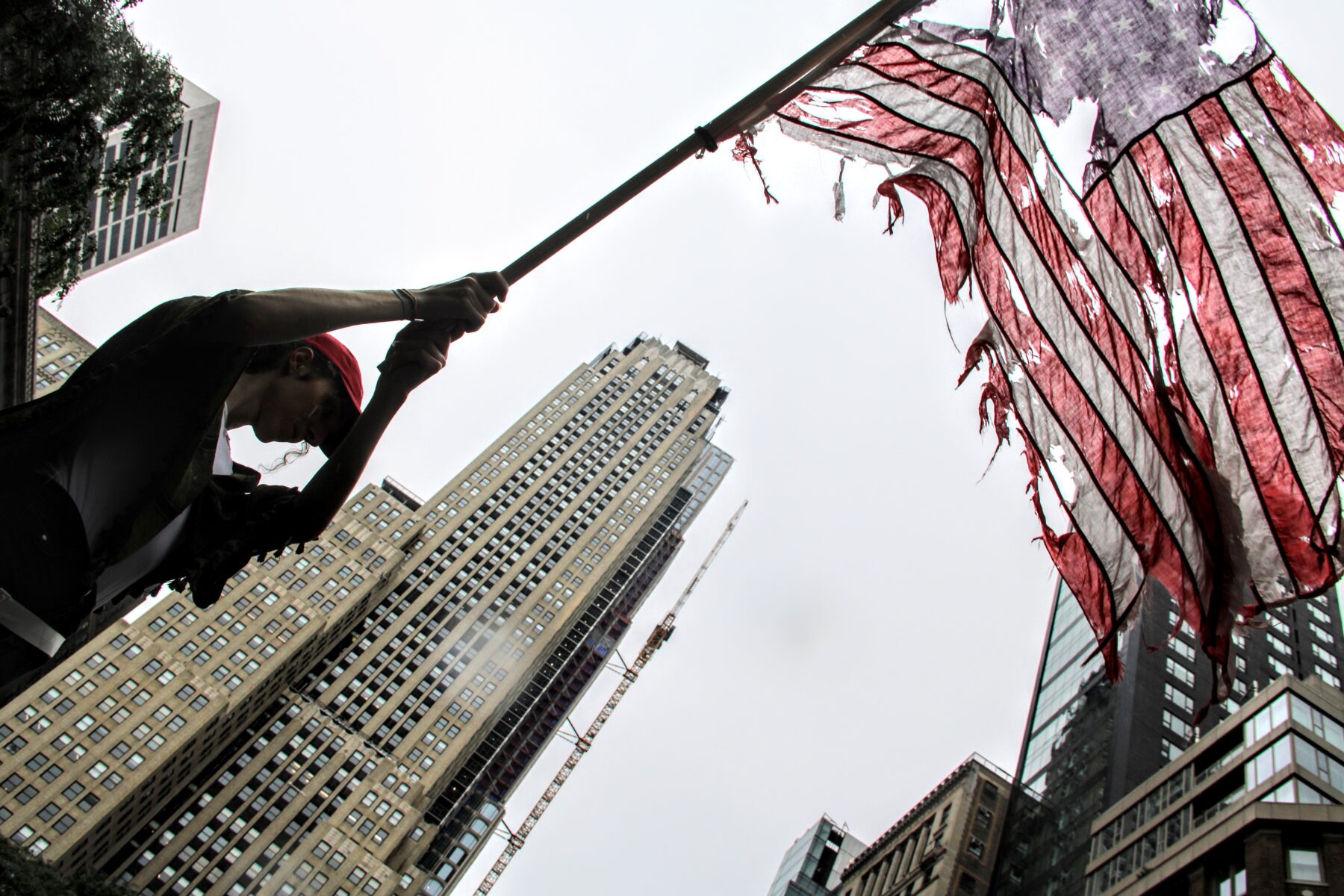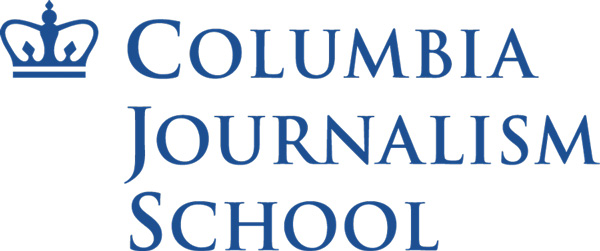
A demonstrator waves a tattered American Flag during the ‘No Kings’ Protest in New York City. (Credit: Abbie Hopson)
The streets around Bryant Park were a sea of umbrellas and rain ponchos as the No Kings protest inched its way along its 14-block route to Madison Square Park. Tens of thousands of people packed together on June 14 as a response to the military parade taking place on the same day in Washington, D.C. to commemorate the U.S. Army’s 250th anniversary, which also coincided with President Donald Trump’s 79th birthday. According to the ACLU, across the country, more than five million Americans attended 2,100 protests. The New York Police Department estimated that 50,000 people attended the Manhattan march.
Waves of chants washed over the crowd in New York City. “Donald Trump has got to go!,”“This is what democracy looks like!,” and the more direct, “F–k Donald Trump!”
Joel Simpson, 78, who’s been participating in protests since the Vietnam War, said that the size and scope felt different from anything he’d experienced before. “I’ve seen great protests. I’ve never seen anything this big,” he said. “This one threatens everybody, and so we’re much more personally involved.”

Demonstrators turned up in large numbers despite the rain. (Credit: Chloe Rosenberg)
Despite the weather, the mood was lighthearted. Marchers balanced children on their shoulders and stopped to take photographs of pun-laden signs. One woman held a Pomeranian in a shoulder bag, its fur growing increasingly damp in the mist.
“People are very loud, very passionate, but not angry,” said a protester who asked to be identified by Anna, citing concerns of fear of retribution. “It’s all just a positive experience. It feels like a community almost, even though I’ve met none of these people.”
One woman marched with a sign with a message that was close to her heart. Margarita Lopez held up a photograph of her father, Jose Nery Lopez Caballero. She explained that her father fought in World War II, not as a draftee but as a Puerto Rican volunteer.
“I’m here with the spirit of my daddy, that fought in the Second World War, and won, and did what he needed to do to stop facism,” she said. “And I’m here to do the same thing.”

Margarita Lopez marched with her father’s photograph. (Credit: Chloe Rosenberg)
Lopez didn’t seem surprised by the size of the crowd.
“This is New York!” she proclaimed proudly. “We don’t tolerate this kind of garbage.”
She has been a proud Lower East Side resident since 1978, and cited the anti-Iraq war protests of the 2000s as a similar example of New York City’s fighting spirit.
There were also signs of anxiety among the crowd. Many covered their faces with surgical masks. Several protesters only agreed to speak under the condition that their last names not be used. They expressed fear of being doxxed on social media or shared stories of friends who had been arrested for protesting.

NYPD officers line up during the ‘No Kings’ Protest in New York City. (Credit: Chloe Rosenberg)
At the rear of the gathering stood New York City Police Department officers, moving closely behind the crowd. Between the protesters and the police were event organizers in neon vests, urging people to keep moving and stay away from the officers. Groups of legal observers stood under eaves to monitor police behavior, calmly scanning the protest.
Although the protest in New York City remained peaceful, some marchers seemed nervous about the potential for a clash between the marchers and the police. A protester who asked only to be identified as Barbara was concerned that, after the main protest dispersed, the police would target anyone who stayed past the allotted time slot of 2 to 4 p.m. or left the preplanned route down Fifth Avenue.
“Right now, in this country, the ground is changing on a daily basis in terms of what police departments are feeling like they are permitted to do, with the example being set at the federal level,” said Barbara. “And so it’s never clear — we never can rest easy that there’s not going to be police provocation in a setting like this.”
Barbara was part of Jewish Elders for Palestinian Freedom, a group of around 20 who stood on the steps of the New York Public Library near its iconic lions. She described recent crackdowns on pro-Palestinian protesters as an “opening wedge.”
“The plan is to — as it always is under facism— to demonize particular groups and then you spread the demonization around broader and broader,” she said. “They’re piloting all of these repressive measures against immigrants and and against Palestine solidarity activists. But they’re going to be turning them against all of us.”
However, she said that she felt encouraged by the size of the protest. “I feel very uplifted when I come to an event like this. We need more of this to dislodge the unbelievable flood of clampdowns and attacks and targeting and sadism that is coming out of this White House and this government.”
By 4:30 p.m., the crowd started to thin out. Protesters — young, old, and all ages in between — left the route and melted back into the crowds of the city. A few blocks away from the route, it was impossible to tell who had been a protester and who had been going about their Saturday as usual.
But Lopez said that there was one thing that united all of the demonstrators. “We all understand one thing,” Lopez said, her voice heavy with emotion. “We understand that we all have the right to be alive. And that nobody has the right to take that away from us.”
About the author(s)
Chloe Rosenberg is a financial analyst and freelance journalist pursuing her master's degree at the Columbia School of Journalism



